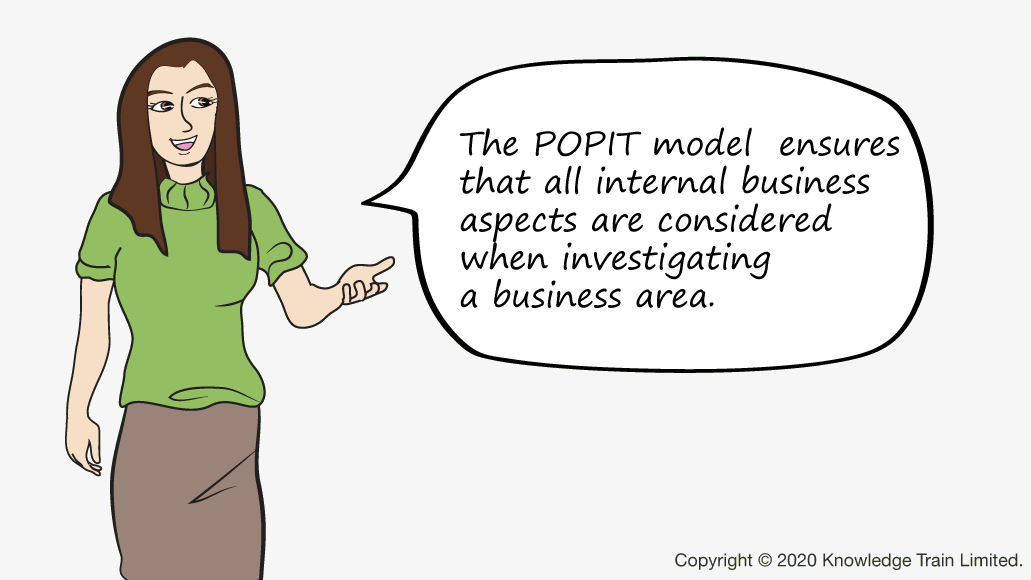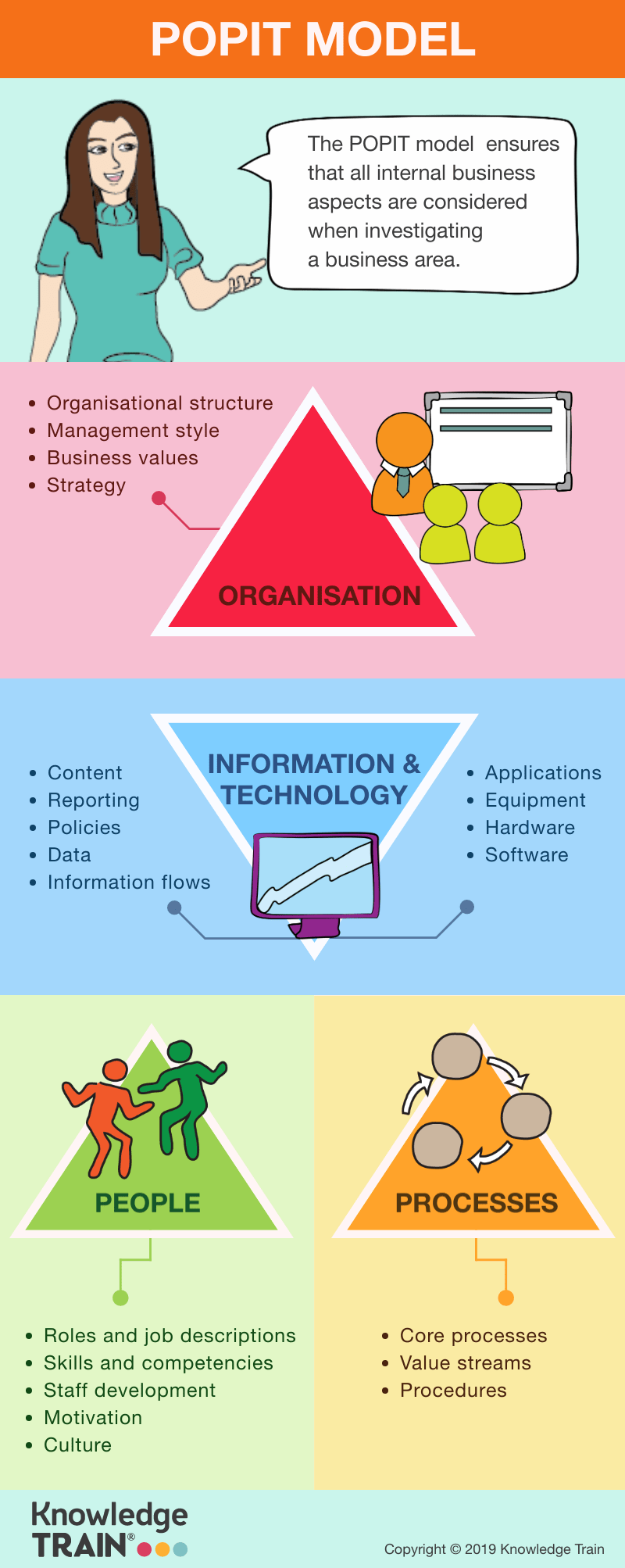POPIT model business analysis technique

POPIT model
The POPIT model ensures that all internal business aspects are considered when investigating a business area. It helps a business analyst identify where problems exist. This holistic approach helps ensure the analyst considers all relevant areas. This technique is covered in detail on these business analysis courses.There are 4 areas to check for problems in this model:
- Processes;
- Organisation;
- People;
- Information Technology.
Processes
A common starting point when conducting gap analysis is to consider the ‘as is’ and ‘to be’ processes. Changes made to one POPIT element inevitably impact on the others. For example, changing a job description may mean 2 jobs roles are combined, the skills of the staff and possibly the processes governing the use of IT system must change.
Organisation
This is an area often overlooked but it’s often the area where gaps exist which have the potential to undermine the new business systems and processes.
People
Any proposals to change must be communicated effectively to the staff affected. The analysis must include the impact on the people who will perform the work and identify any gaps. Typically, such gaps are found in the areas of skills, recruitment, staff development and reward.
Information technology
Business process improvements often require the moving information around. Therefore, data modelling techniques can help understand the information requirements of new business IT systems which can support the business improvements. This must consider IT support, accessibility and alignment to enterprise architecture.
Infographic

